V2G & Bidirectional Charging: Calm Before the Storm?⚡Australia
Explore why the delays in vehicle-to-grid and bidirectional chargers are happening, and how V2G faces regulatory and legislative development in Australia.
Read more
Tesla Powerwall 3 Rebate Now Available - Combine with Federal Subsidy Today
Posted 16 Sep
With the industry hype going into 2025 with the legislation announcements and manufacturer’s teasing us with planned and available V2G chargers, everything seems to have gone quiet. Is this the calm before the storm?
Over the last few months, there has barely been any new public developments or announcements in the vehicle-to-grid and bidirectional realm, but why is this? What is Australia waiting for?
Australia’s delays for vehicle-to-grid and bidirectional charging comes down to framework development. With pending national framework (due at the end of 2025), manufacturers don’t have certainty on requirements, enforcement, and customer protection.
Referring back to the roadmap for the National Roadmap for bidirectional EV charging, released on 12th Feb 2025, it shows us an indicative map of where events may be happening.
For example, from the start to mid-2025, there were regulatory and technical breakthroughs that were required to enable other developments in the industry. Elements like policies, tariff rule changes, and market direction for relevant ISO and OCPP have been a large part of laying the foundations for vehicle-to-grid.
Continuing into the backend of 2025, is Australia where it needs to be for vehicle-to-grid? Let’s break down
each section of the bidirectional charging roadmap to see where we sit.
The Government has announced their vision for vehicle-to-grid, with the national V2G roadmap, and accommodating bidirectional technologies in their energy roadmap.
In the National Consumer Energy Resources (CER) Plan, they talk about technology key progress elements that will achieve pathways to enable consumers to take advantage of bidirectional charging.
These elements include:
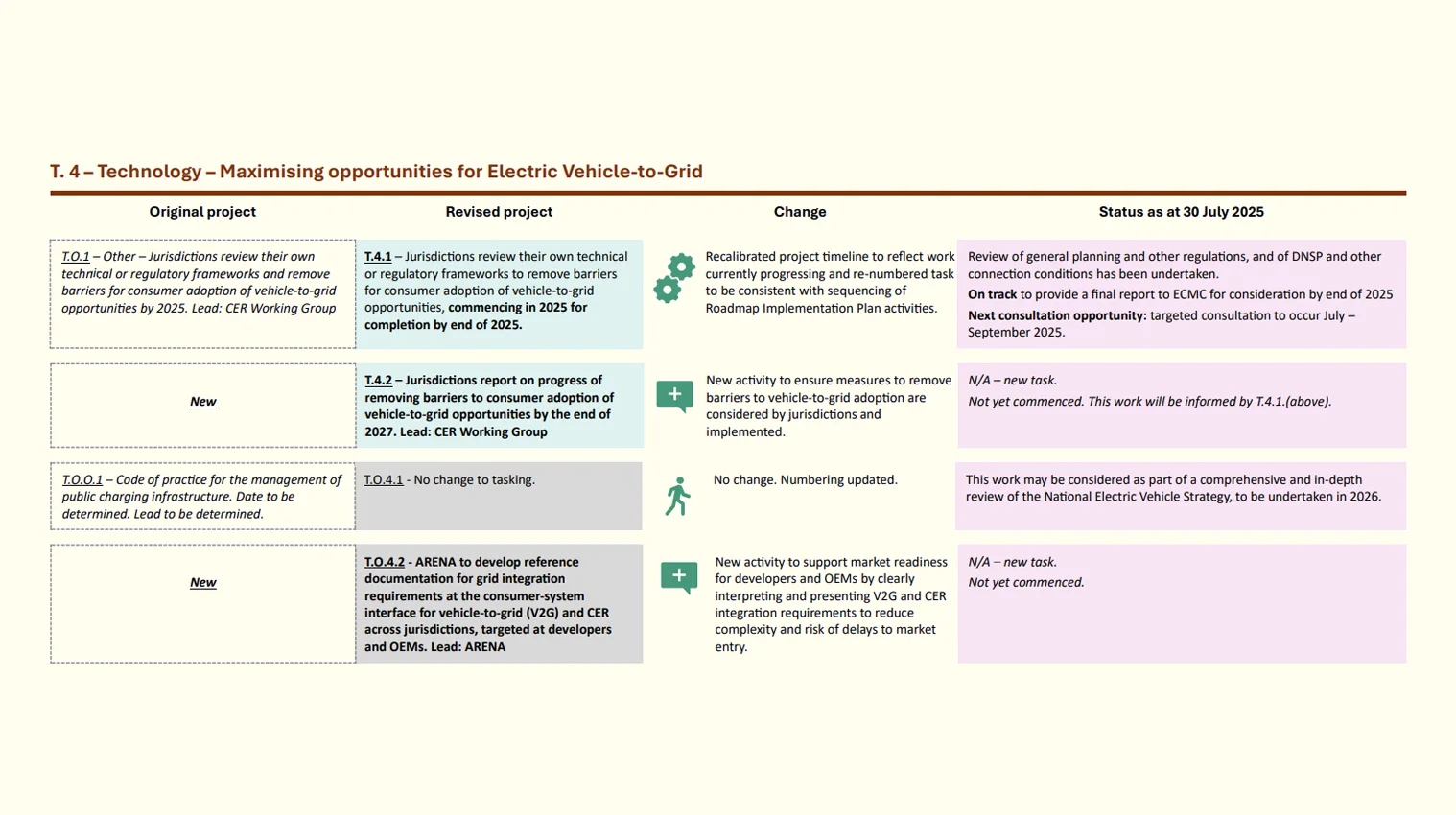
The CERs plan of removing barriers for vehicle-to-grid technology actually shows us the status of each contributing project that will help maximise the opportunities for electric vehicle-to-grid.
Each state will also need to develop their own technical and regulatory frameworks. The next consultation opportunity should be between July and September 2025, where they will review general plans and other regulations, as well as DNSP and other connection conditions.
We’ll let the roadmap go more in-depth, but essentially Australia is in its ‘rulemaking’ phase for bidirectional and vehicle-to-grid technologies. Stakeholders have really only just started working on elements like new tariff structures, fair price reforms, and consumer protections with most projects not starting until 2026.

Image courtesy of Hyundai Motor Group.
Whilst legislation has passed for bidirectional and V2G charging, the required framework is still in development. This includes regulation, legislation, a regulator/jurisdiction definition and implementation.
The primary focus in this area is to build a national regulatory framework for CERs like solar, battery, and EV chargers to enable consistent standards and a national regulator.
According to the projected August - October 2025 timeline, Energy Ministers are expected to agree on national framework which was recalibrated to enable more consultation with stakeholders.
By 2026, vehicle-to-grid legislation is also due to be revised to clarify the commonwealth-led processes, as
well as establishing a regulator and determining jurisdiction alignment.
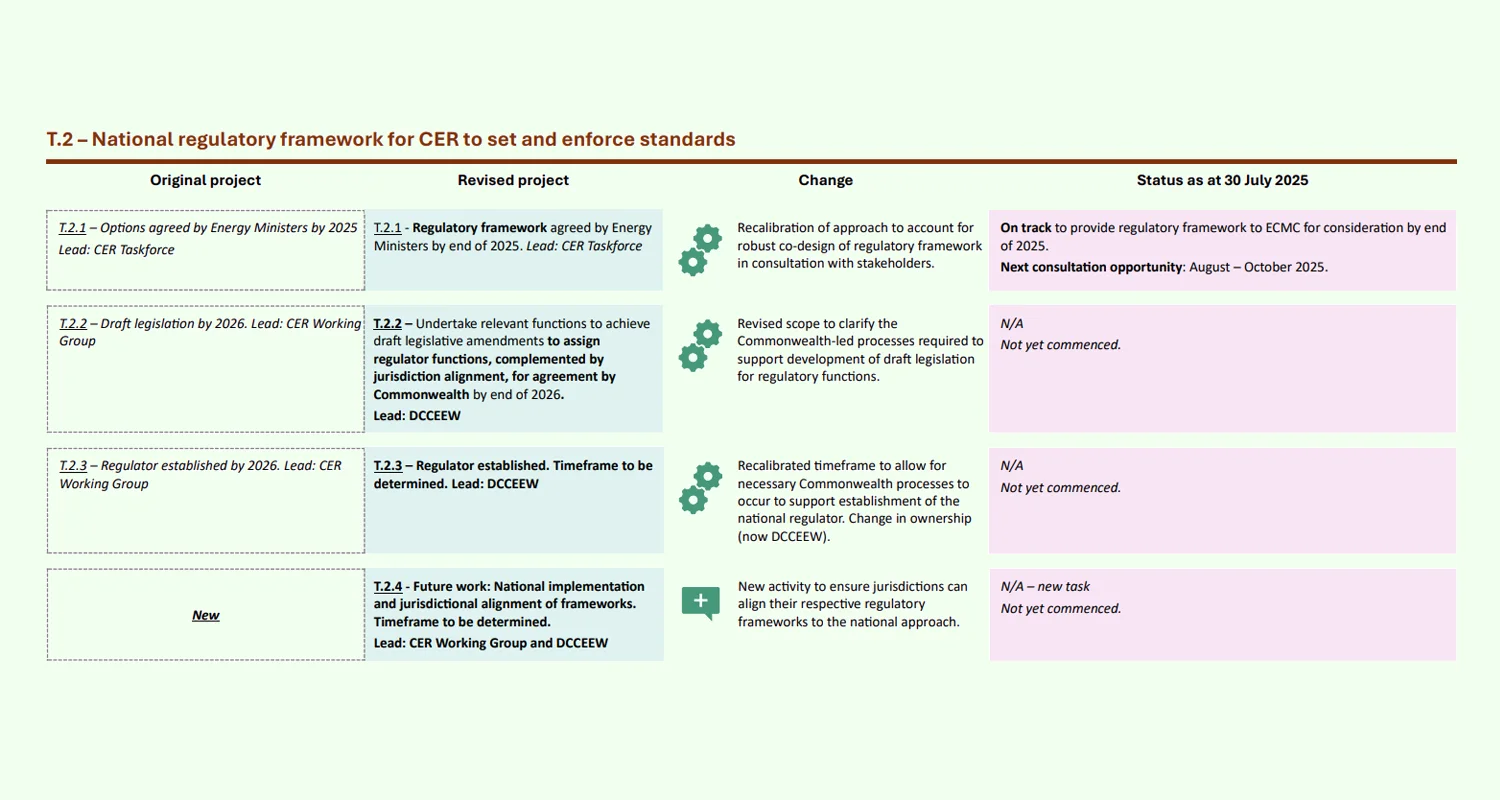
In a previous article, we spoke to the network provider Essential Energy who said that the grid is ready for vehicle-to-grid technology. Whilst the grid network may be ready in a technical sense, it doesn’t necessarily mean that vehicle-to-grid capable EVs can start exporting right now.
As mentioned in the CER roadmap, it reveals their planned delivery of implemented flexible export components of Dynamic Operating Envelopes (DOEs), which are essentially smart control systems that indicate how much electricity a home can import and export.
These flexible export components are used for Virtual Power Plants (VPPs), which operate on non-fixed export limits which adjust in real-time based on network demand and supply conditions. This is required for vehicle-to-grid technologies, with SA, QLD, and VIC already completed their implementation. NSW and ACT are still ‘planned’ as of 20 July 2025.
Flexible export DOEs are required to rollout V2G technology, and their continual progression across each state is one of the main reasons
why vehicle-to-grid feels like it’s not advancing, at least in NSW!

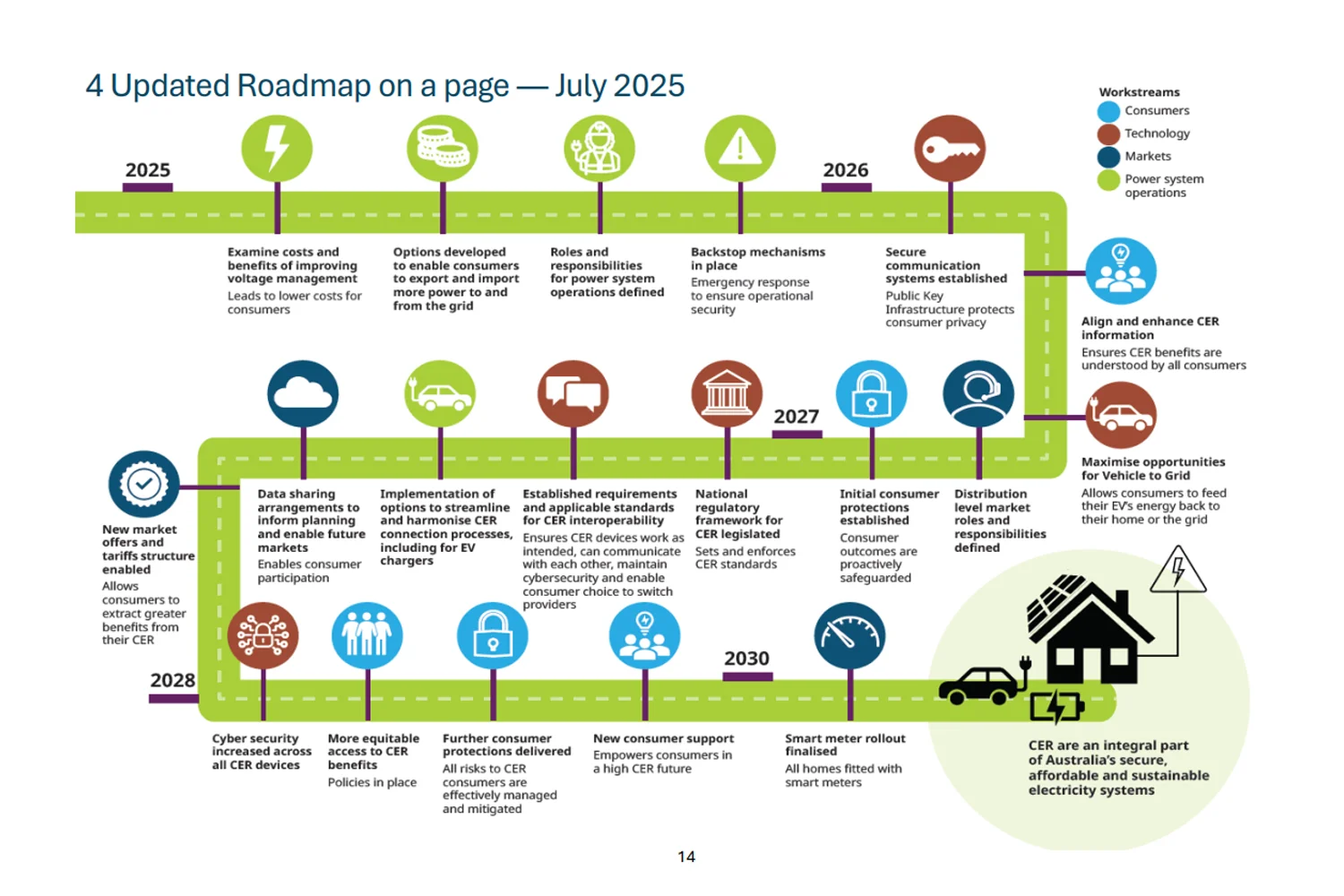
Image courtesy of Energy.gov.au
Get the latest updates.
|
Year |
Key Project / Milestone |
Status / Notes |
| 2025 |
Flexible Exports (DOEs) – P.1.1 |
On track. Completed in SA, QLD, VIC. WA underway. NSW, ACT planned. NT & TAS pending. Enables homes/EVs to safely export power. |
| End 2025 |
National CER Framework – T.2.1 |
Energy Ministers to agree on standards for consumer energy resources. Sets the rulebook for safety, compliance, and participation. |
| 2026 |
AEMC Pricing Review (M.0.1.1) |
Examines retail & network pricing to align incentives for V2G participation. Delayed from 2025. |
| 2026 |
Draft CER Legislation – T.2.2 |
Commonwealth-led amendments to assign regulator functions. Critical for legal enforcement and oversight. |
| 2026–2027 |
New Tariffs & Market Structures – M.1.1 & M.1.2 |
Enables fair, consumer-friendly financial incentives for households and V2G operators. |
| 2027 |
Framework for VPPs, DOEs & Flexibility Services – M.1.3 |
Operational rules for Virtual Power Plants and real-time grid participation. Includes performance reporting and oversight. |
| 2027 |
CER Operational Data Exchange – M.2.2 |
Real-time data sharing for dynamic envelopes, grid management, and market participation. Priority use cases in progress. |
| TBD |
National CER Regulator Established – T.2.3 |
Will oversee compliance, safety, and enforcement across states and territories. |
| TBD |
Jurisdictional Alignment – T.2.4 |
Ensures state & territory rules are harmonized with national framework for consistent V2G rollout. |
| TBD |
Cybersecurity Framework – T.5.1 & T.5.2 |
Gap analysis and national approach for secure communications and data sharing. Essential for large-scale V2G. |
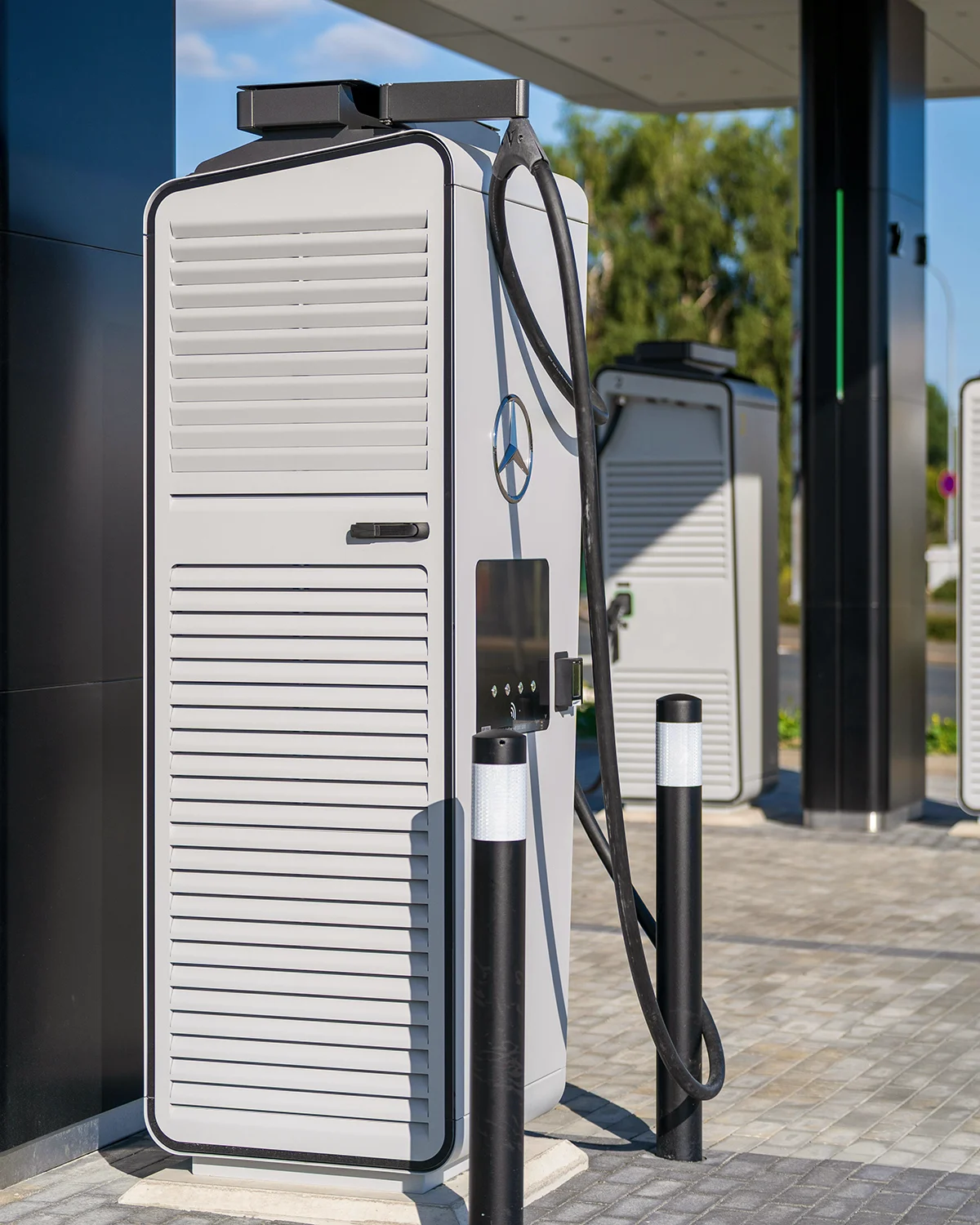
Image courtesy of Mohamed B.
We’ve been watching vehicle-to-grid and bidirectional charging for years as the technology has come to light being right in the middle of the action. But when you take a step back, is there really a high demand for potential consumers to invest in this innovative technology?
It’s hard to say this early if there is strong demand for vehicle-to-grid technology, however, if it becomes anything like home battery storage when supercharged by government incentives, V2G could quickly become extremely high demand even though it most likely won’t replace traditional home batteries.
To help increase awareness and uptake, providing new incentives will need to be beneficial for Australians with the right market mechanisms.
Being delayed into 2026, the CER taskforce and National Electricity Market (NEM) will collaboratively review policy direction.
Vehicle-Grid Information Network (VGIN)
A collective group of manufacturers, automakers, electricity retailers, installers, and consumer advocates to provide consistent and
valuable evidence-based information about vehicle-to-grid.
Consumer Awareness & Uptake
Developing broader communications to accommodate expanded CER to help increase awareness like online content, live events, and social
media, hosted by both government and industry stakeholders.
CHAdeMO & CSS V2G
Programs may be available for existing owners with older electric vehicle models like Nissan Lead and Mitsubishi Outlander, which will
need access to compatible bidirectional chargers.
To encourage early adoption, there will need to be a range of motivation and incentive measures to mitigate the risks involved. Both
international and local studies have indicated there is a strong demand for vehicle-to-grid charging if there is strong financial and
climate reasoning.
‘Establishing a clear national policy direction is likely to further stimulate public interest and build confidence in bidirectional EV charging.’ – ARENA Roadmap (Page 27).
We’ve established that Australia’s grid and regulations aren’t ready for vehicle-to-grid, but shouldn’t manufacturers be releasing their bidirectional chargers?
AS4777.2 allows the certification of both AC and DC bidirectional charging products, however even though Australia offers an advantage in its national regulatory consistency, its certification processes under the standard are yet to be tested. Because of this, manufacturers are aware of the risk involved in providing a bidirectional solution and getting it certified.
As mentioned before, the CERs approach to DOEs will determine how international electric vehicle and charger manufacturers will integrate their products to the Australian market. The continued development and lack of formal guidance for our energy grid architecture will act as a market barrier for supply chains.
‘Supply chain participants pointed to a lack of guidance regarding Australia’s approach to CER
integration. Australia has no ‘front door’ for CER product developers and existing information is fragmented and lacks a unifying
framework. Combined with our relatively small market size, a lack of clear guidance regarding current requirements and future roadmaps
provides an initial barrier to market engagement.’
- ARENA
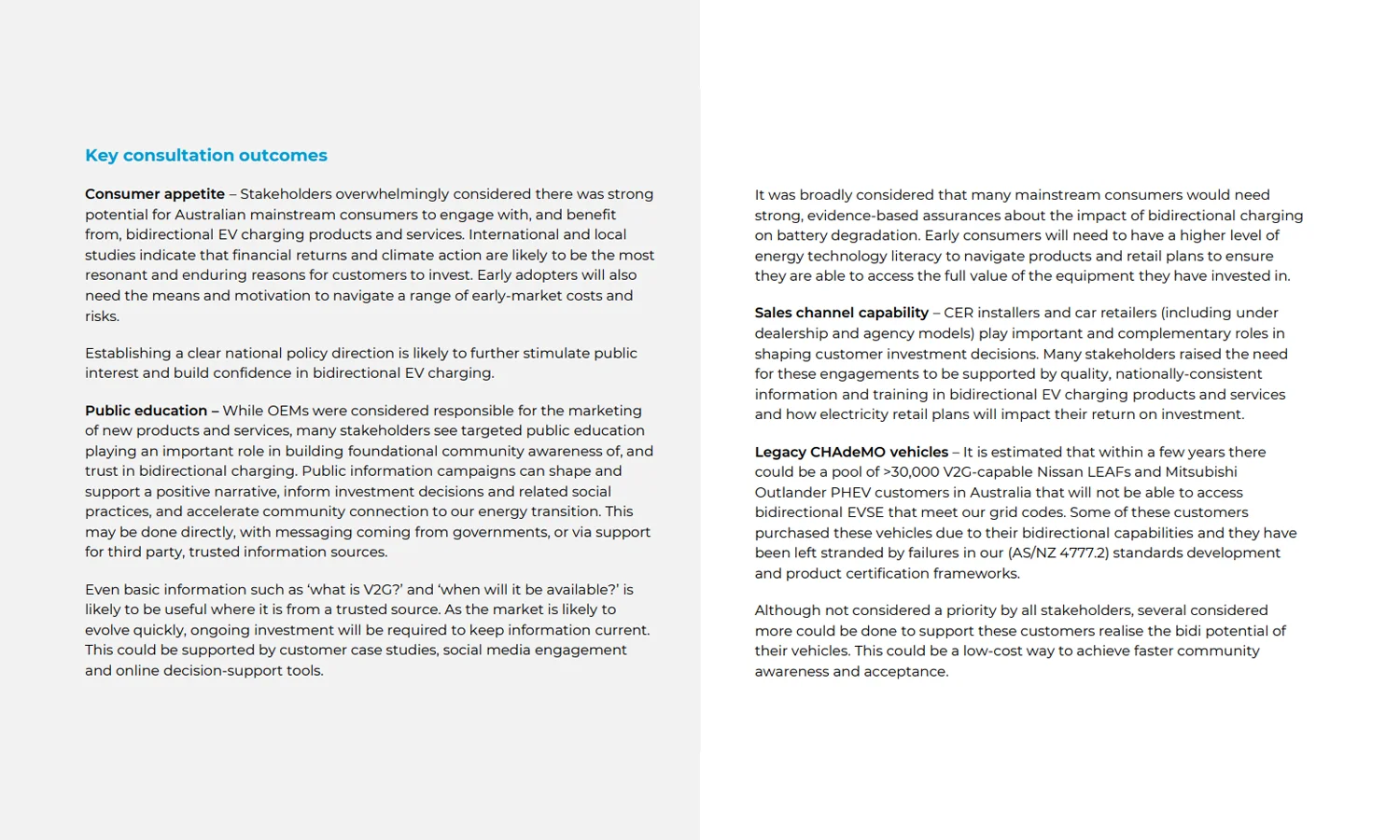
The bottom line is that the grid is technically ready, and the vehicle-to-grid technology works. However, Australia is developing an ecosystem for energy distribution to enable and maximise vehicle-to-grid with proper legislative and regulatory mechanisms.
This paired with the gradual release and tease of V2G & bidirectional EVSEs, infrastructure, and services, we should start to see some more technologies develop towards the end of 2025.
Explore why the delays in vehicle-to-grid and bidirectional chargers are happening, and how V2G faces regulatory and legislative development in Australia.
Explore upcoming & available bidirectional V2G-capable chargers in Australia from V2Grid, RedEarth, Sigenergy, Enphase, Tesla, and Fronius EV charging.
Explore how you can use your EV battery via vehicle-to-load (V2L) as a backup energy source during blackouts to power your home appliances in Australia.
Should solar owners get a home battery (ESS) or wait for vehicle-to-home (V2H) technology to use electric vehicle battery power to be available in Australia?
With homes, Australian standards, and energy networks being ready for bidirectional charging, why the wait? Let's explore grid, EV, & charger developments.
The journey of bidirectional charging in Australia has hit a milestone with the recent approval of the new standard for vehicle-to-grid (V2G) charging for 2025.
Renewable News Articles
Not only are we specialists in solar power, but we pride ourselves in being leading installers in battery
storage, as well as EV charging for homes and businesses. For solar and battery systems, we offer both on and off-grid solutions for a
range of applications.
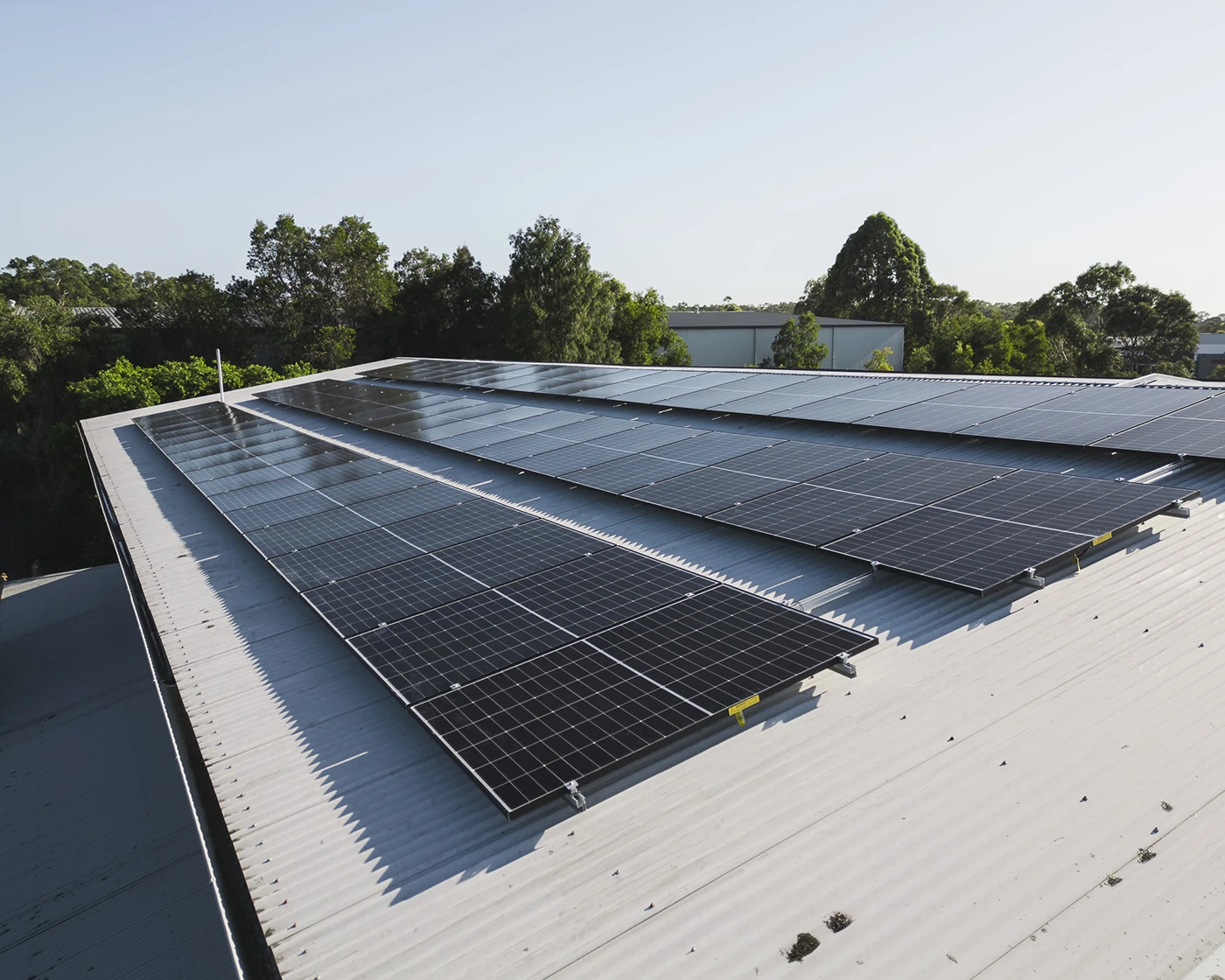
Newcastle's leading solar installers, providing long-lasting residential and commercial rooftop solar systems.
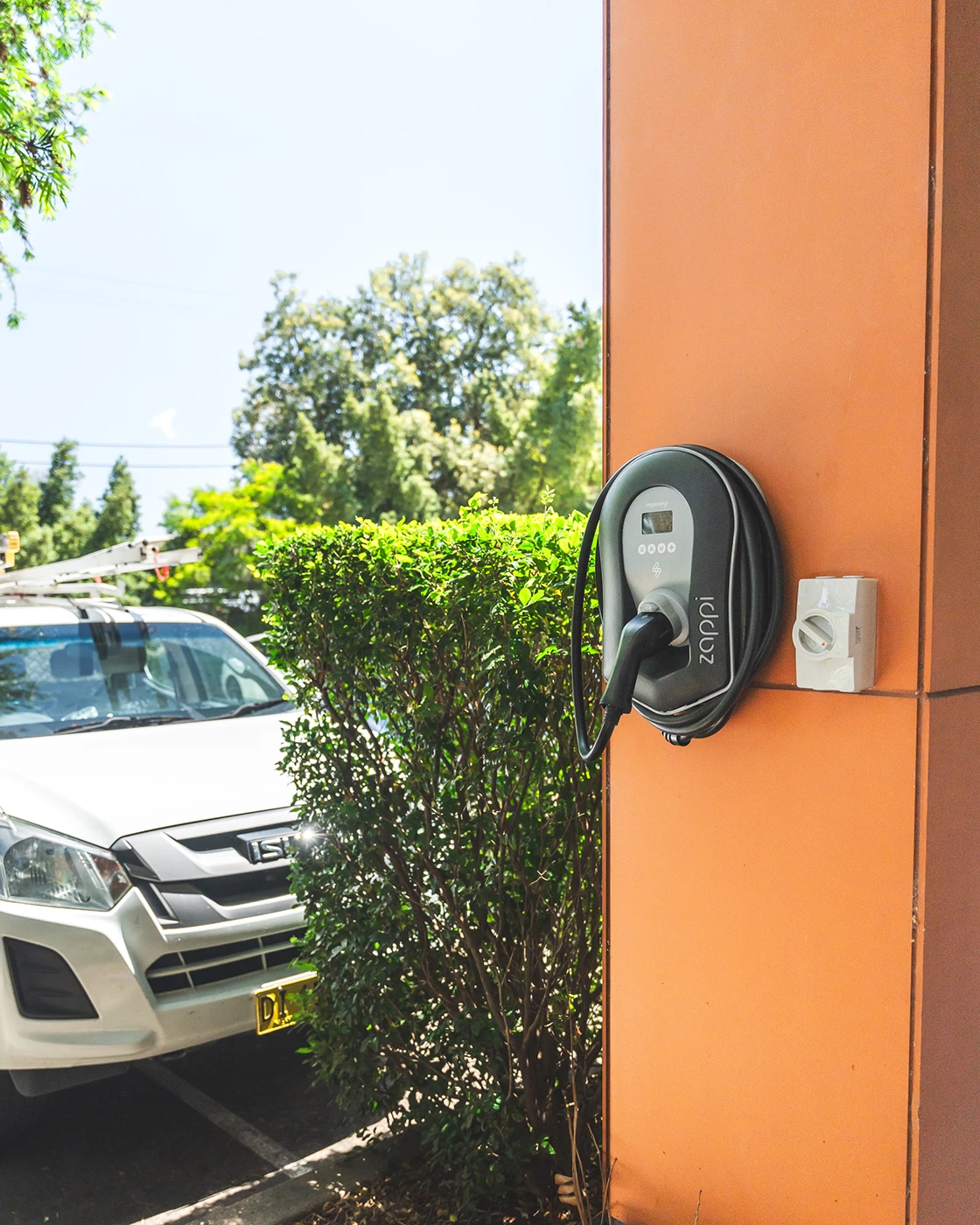
Experts in both residential and commercial electric vehicle charging station installations from 7kW - 360kW+.
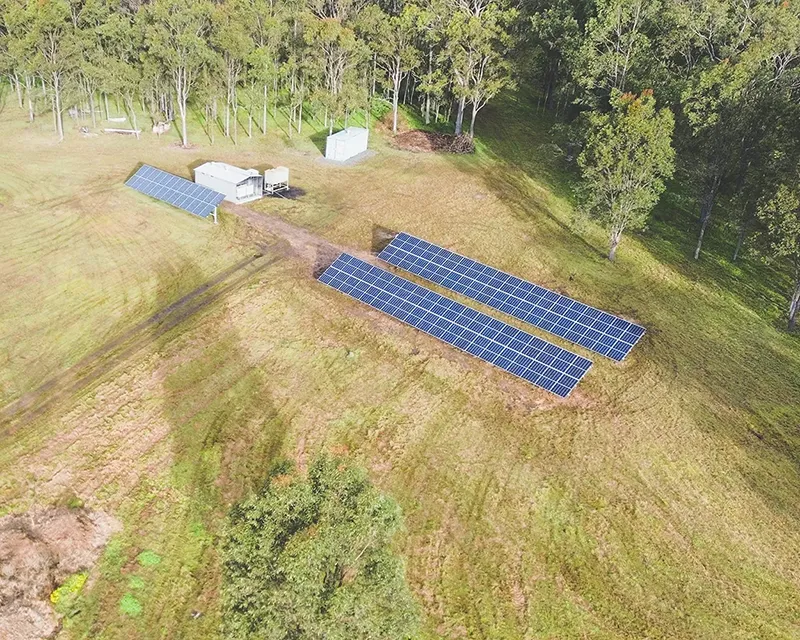
Specialists in off-grid solar and battery, helping properties never have to pay another electricity bill again.

With decades of electrical and industry experience, our fully-qualified & licensed electricians are here to help.
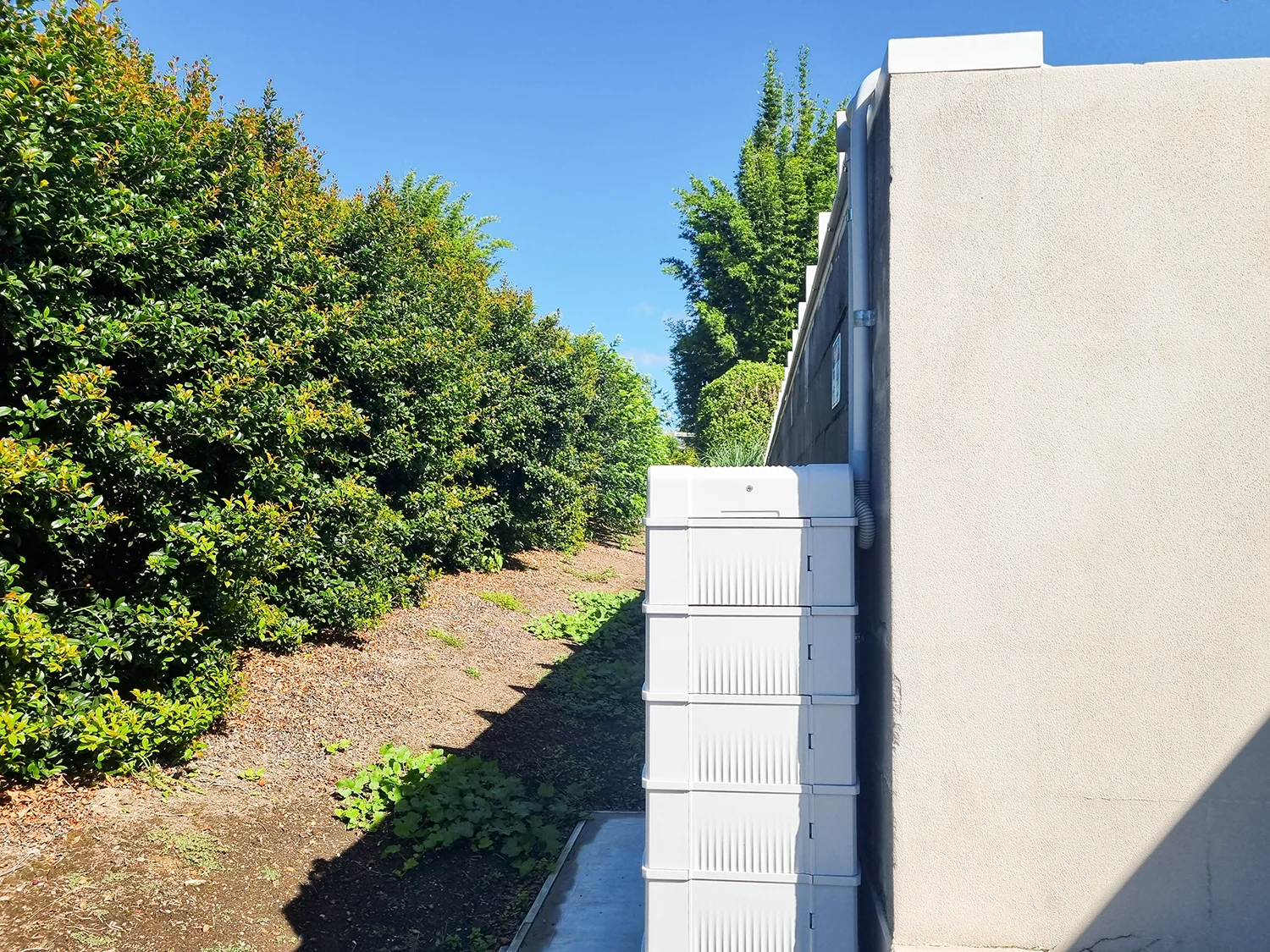
Maximise your solar generation with battery storage from reputable brands to accelerate return-on-investment.
Leave a Comment
By the time Australia works all this out it will twilight for the V2G -- I just discovered early this year that most electric cars on offer here now are hybricd that CANNOT be plugged in to charge. Who saw that coming, not the pollies. I'd never buy such a car and instead have bought several small engined turbo petrol cars in the meantime.